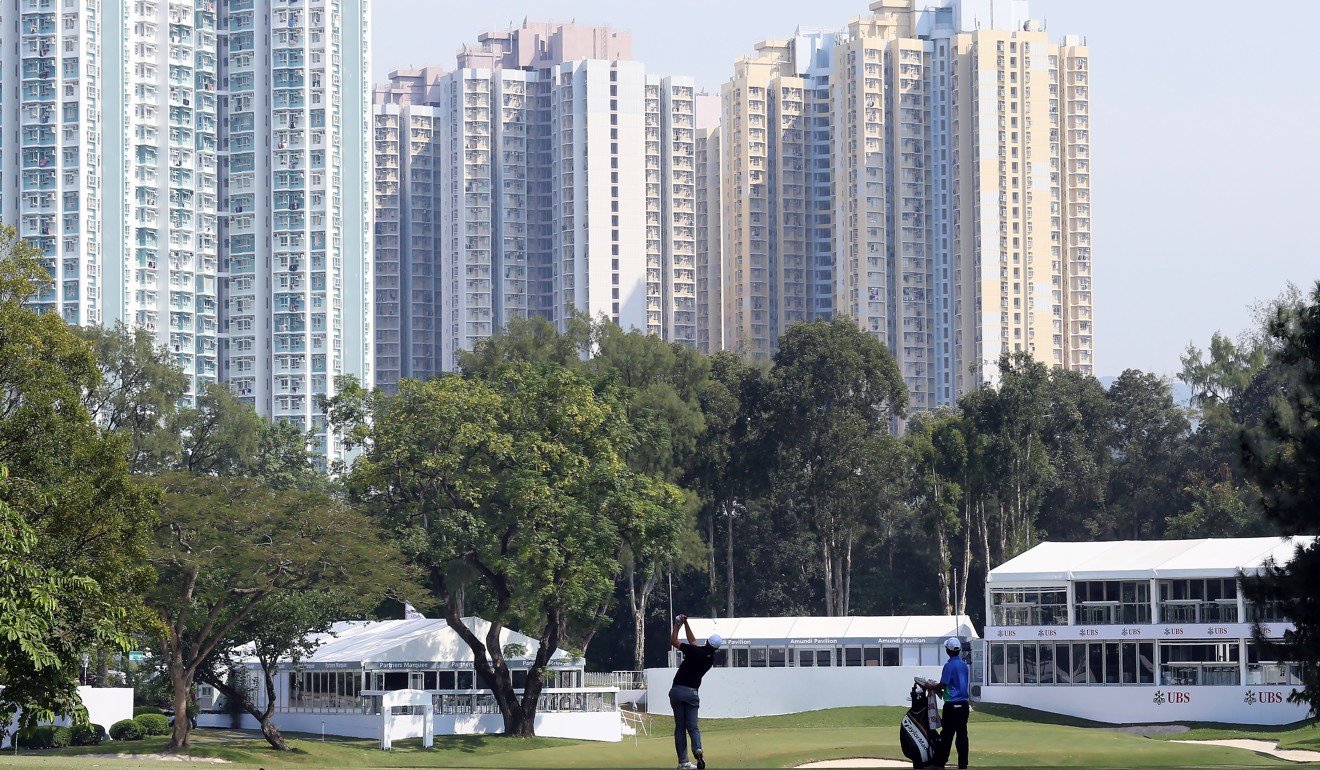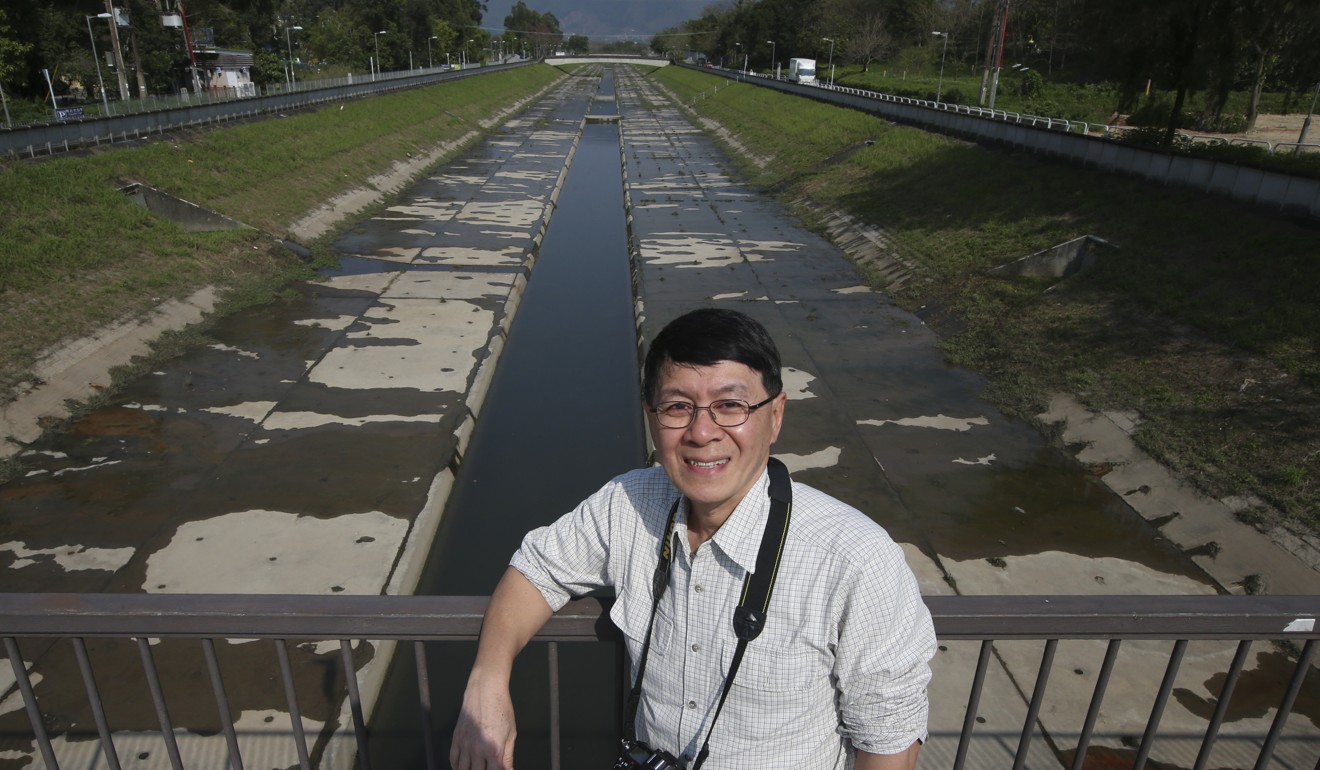
Exclusive | 5,000 flats could be built on Hong Kong golf course, government study finds
Official release of results by government planners held until a lease policy review is completed, but green activists argue such land should be freed up
More than 5,000 Hong Kong flats can be built on part of a 170-hectare golf course in Fanling, if golfers and authorities holding the land are willing to let go, according to a study by planners, the Post has learned.
The revelation came amid calls for the government to develop housing on some 400 hectares of public land across the city which are rented at cheap rates for private recreation. Advocates are against using scenic and ecologically important space on the fringes of country parks for housing.

Government advisers on land supply will meet in the next two weeks to discuss whether such private recreational sites held by the Home Affairs Bureau should be considered in solving the city’s housing issues.
Demolishing Fanling course for flats won’t impact top golfers, says Olivia Cheng
The latest study, conducted by the Planning Department, found that the eastern part of the golf course comprising a car park and the so-called Old Course could be used to build 5,000 to 6,000 flats, a government source told the Post.
The Post estimated that the area, close to North District Hospital and Ching Ho Estate, would be about 16 hectares, roughly a tenth of the total area of the golf course.
“The site is close to major infrastructure,” the source said. “There are some old trees and graves there but they can be avoided in future housing developments according to the study.”
The source added that the development would not affect the international Hong Kong Open tournament, because the golf competitions mainly took place on the remaining two courses – the New Course and the Eden Course.
“The study found [the plan to use part of the land] technically feasible, but at the end of the day, it’s the Home Affairs Bureau taking care of the policy,” the source said.
The bureau, which has been reviewing 67 private recreational leases involving the 400 hectares of citywide land, has been told of the study’s findings.
The golf course is leased to the Hong Kong Golf Club until August 2020. The rent in 2016-2017 was HK$2.4 million.
It was previously reported that the bureau might renew the lease for another three years under a higher rent, and also require the club to designate more opening hours for the public. This led to speculation that the bureau did not have plans to develop the land.
Why should these exclusive, members-only sites be protected from urban planning?
A government spokesman said developing the golf course was an option studied from a technical perspective, and a review of the private recreational lease of the land was under way. He said the government would “take into account the outcomes of the policy review in considering the way forward”.
Roy Tam Hoi-pong, chief executive of environmental group Green Sense and a long-time supporter of developing the golf course, said it was time for the bureau to release some private recreational sites for development.
“At a time when the government is looking high and low for land to build housing, even turning urban green areas and public recreational sites into residential sites, how can the bureau take special care of these private recreational sites?” Tam said.
“Why should these exclusive, members-only sites be protected from urban planning?”
Tam said he hoped the government would build affordable, subsidised housing on the golf course, instead of selling the site to private developers to build expensive flats.

Despite relatively low rents, some as low as HK$1,000 a year, many private recreational sites have limited public access.
The golf course, for example, is open to the public for booking on weekdays only, not including public holidays. The Old Course is open to eligible indigenous villagers living nearby for free.

Dr Ng Cho-nam, a former Town Planning Board member and an associate professor of geography at the University of Hong Kong, said the private recreational lease review was necessary to make more efficient use of public land resources.
But Ng added that this did not mean all of such sites should be taken back for housing development, “or else it would be like communism”.
Housing minister not keen to bulldoze Hong Kong golf course to build flats
Ng said although the location of the Old Course would be good for housing development, the golf course as a whole was a historic site. It served the public and functioned as a venue for international games.
“The government should not only look at this particular site but all sites comprehensively,” he said.

The study on the golf course, commissioned in 2014 by Financial Secretary Paul Chan Mo-po, then the secretary for development, is part of a preliminary study on the feasibility of developing the New Territories North.
The study was completed last year but the findings on the golf course was withheld, pending the completion of the lease review.



